7 Nights Santorini Yacht Charter Itinerary
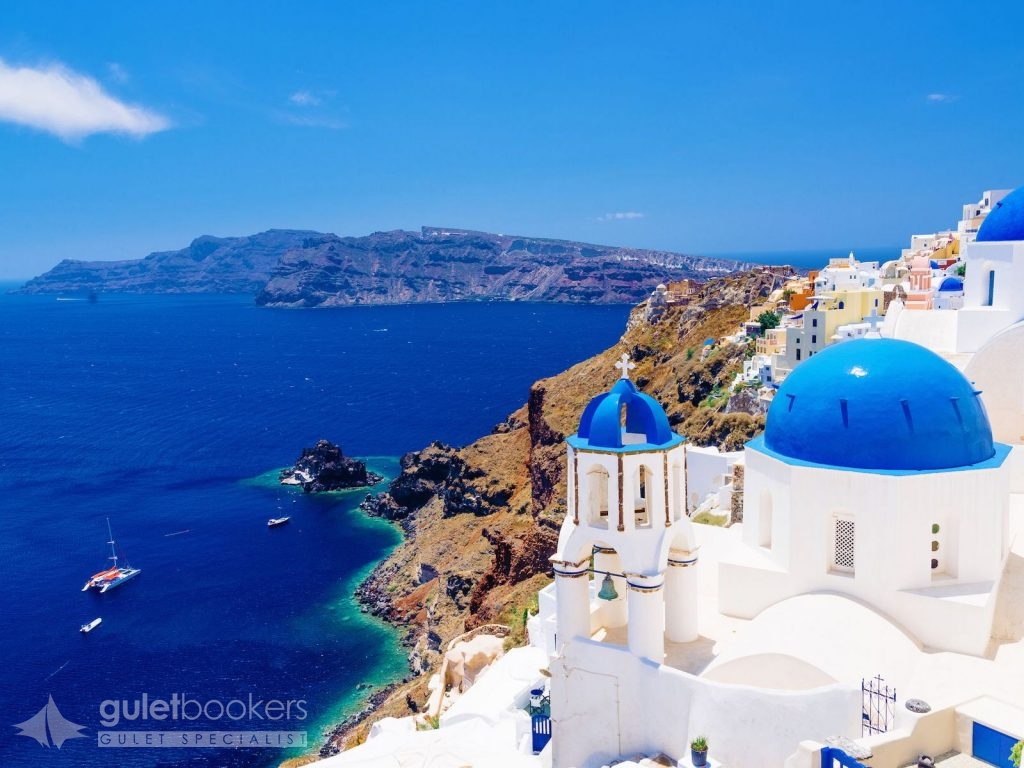
Santorini is one of the best-known Greek islands the world over. It is in itself a unique geological phenomenon, as today’s island is what has remained of the initial island, Strongyli (meaning Round), which sunk to the bottom of the sea following an eruption of its volcano during the 16th century B.C. This has been one of the most powerful eruptions in the history of Earth: three-quarters of the island was submerged, shaping today’s Caldera. Furthermore, the major aftermath of that eruption was the destruction of the Minoan Palaces in Crete. Santorini’s area is 73 sq. km, its coastal length is 69.5 km and there are 13,670 residents. Santorini is the southernmost island in the Cyclades group. The island of Santorini is actually a group of islands comprised of Thira, Thirasia, Aspronisi, Palaia Kameni, and Nea Kameni (Kameni meaning burned). The island’s architectural heritage is preserved remarkably well in Fira and Oia as well as in other inland villages. An important prehistoric civilization thrived on the island, mainly during the Middle Cycladic Period, and was destroyed by the volcanic eruption. In time, the island was repopulated and it flourished during the Hellenistic and Roman times. Later on, the Venetians took the island over and remained there for centuries. Over the last decades, Santorini has known a massive tourism growth. Still, the island has remained as appealing as ever, with secrets and places of unspoiled natural beauty yet to be explored, not to mention the lovely sunset for which Santorini has been renowned across the planet. Local wine is famous and the island’s vineyards have been producing it since antiquity.
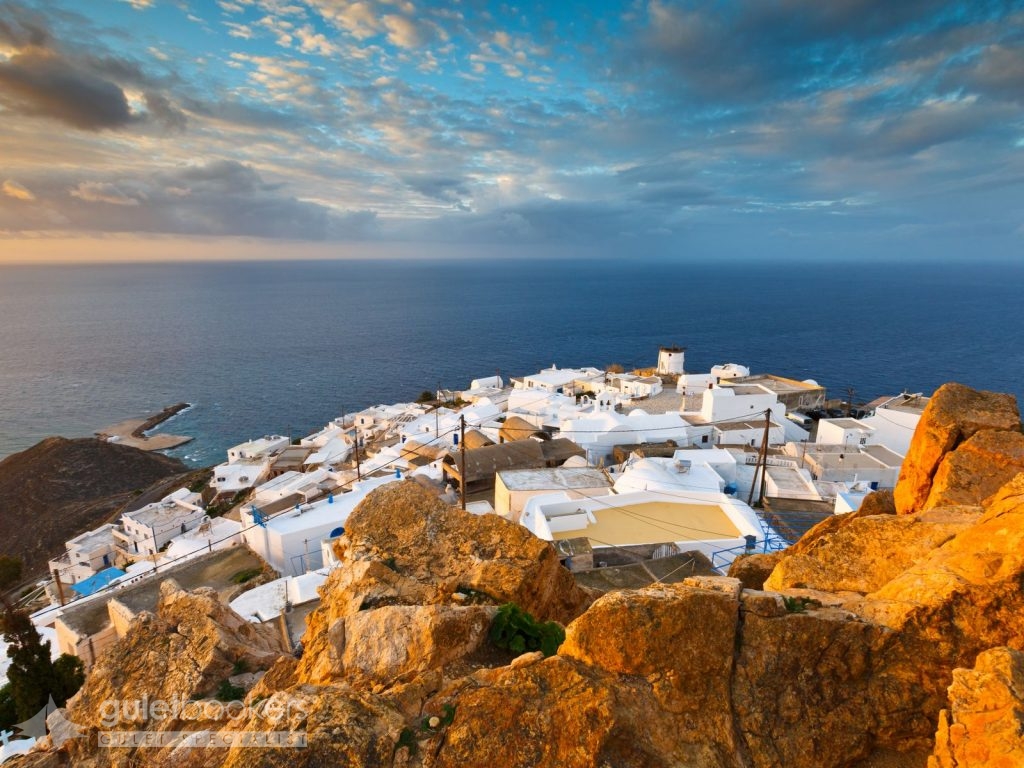
Anafi is a small paradise with pristine lovely countryside bearing all the features of a typical beautiful Cyclades island. It is located east of Santorini. Mount Kalamos (460 m.) rises on the island’s east side. According to Greek mythology, Anafi was ordered by Apollo to emerge from the bottom of the Aegean, in order to provide shelter to the Argonauts. There is also another version connecting the name of the island with the non-existence of snakes on it (An-ofis: “an” meaning “absence of” and “ofis” meaning snake)! The ancient town of Anafi was founded by Dorians during the 8th century BC. During the Byzantine times, Anafi had suffered pirate raids. In 1537, after interim periods of Venetian rule, the island was occupied by the Turks, following the invasion of Hayreddin Barbarossa who razed the place to the ground.
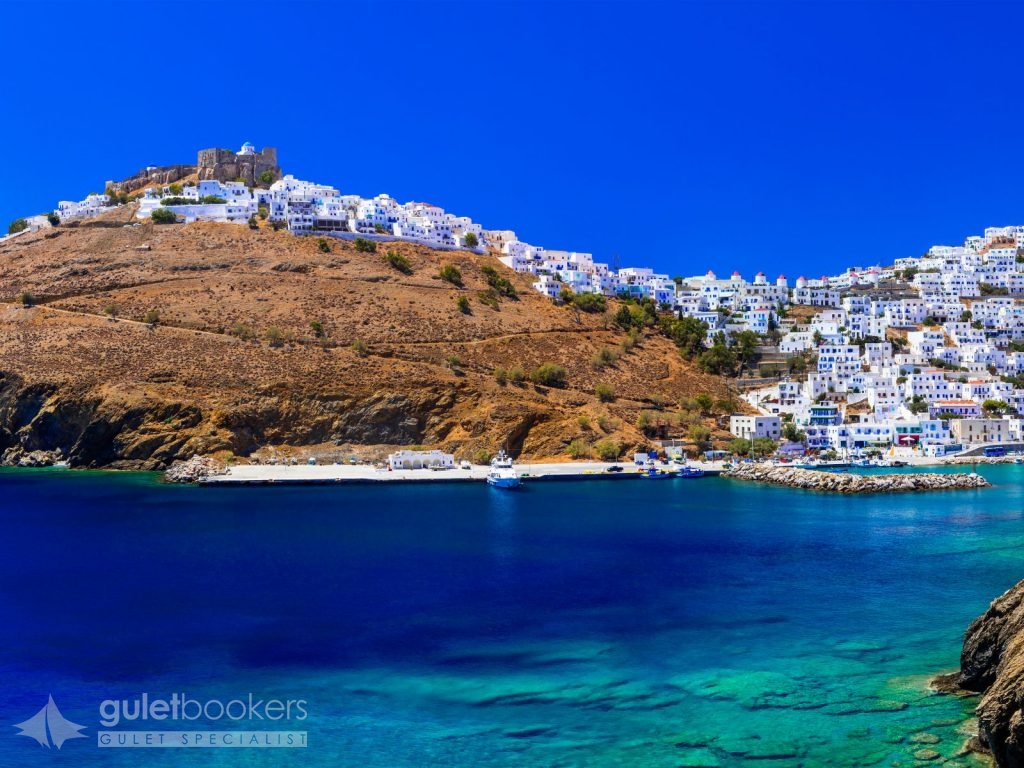
Astypalaia is the westernmost island of the Group, located exactly where the Dodecanese Islands meet the Cyclades Islands. This is why Astypalaia’s landscapes and architecture are quite similar to those found in Cyclades. It is naturally separated into Mesa Nisi [the inner island] (western part) and Exo Nisi [the outer island] (eastern part) by a thin strip of land less than 100 m. wide. The island was named after Astypalaia, the daughter of Phoenix and Perimede. In the old days the island was also called Ichthyoessa due to its abundant fishing grounds. It was first inhabited in prehistoric times. In 1204 it came under the Venetian rule enforced by the Guerini family until 1537 with the exception of a brief period in time (1269-1310) when the Byzantine Empire took over again. In 1537 the Turks occupied the island. As is the case with the other Dodecanese islands, Astypalaia remained under Turkish rule until 1912; it was then conquered by the Italians, the British, and the Germans until it was finally integrated in Greece in 1948.
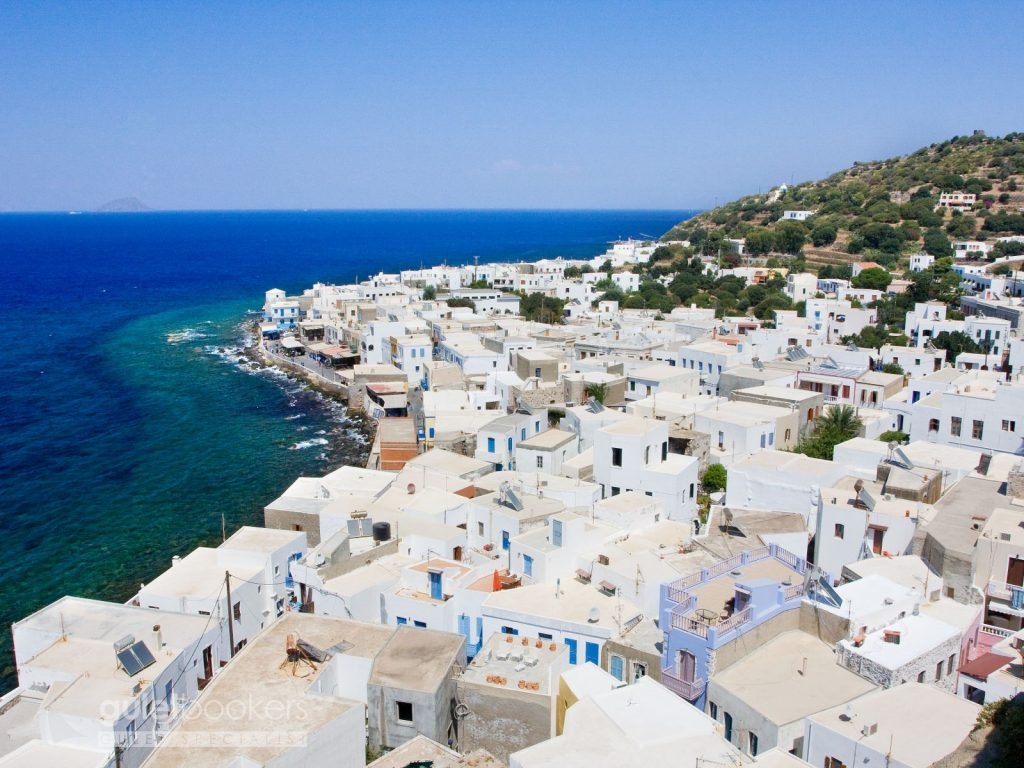
Nisyros is one of the most beautiful Aegean Islands, yet untouched by tourism growth. According to Mythology, the island was created during the Gigantomachy, the battle between the Giants and the Gods. During that battle, Poseidon pursued the Giant Polyvotis to Kos, cut off a piece of the island and hurled it onto the Giant, thus sinking him into the Aegean Sea for eternity. That legendary piece of rock is Nisyros and the eruptions of its volcano are the wrathful breathing of the defeated Giant. Nisyros island was created from these volcanic eruptions making it the “newest” of Greece’s volcanic centres and still an active one – along with the volcanic centres at Milos, Santorini, and Methana. In antiquity, Nisyros had a thriving trade in obsidian which the island’s inhabitants would extract from the nearby island of Gyali.
Beatiful Mandraki is the island’s capital town and port. Its squares feature amazing pebbled paving, and the narrow alleys are flanked by white or coloured two-storey houses with wooden balconies. The houses have been built using volcanic rock and have been insulated with pumice. The volcano is remarkable to see when you arrive to the island. You can walk in the caldera and watch the bubbling steam vents. At the caldera’s bottom there are ten craters in very good condition, each with its own name. The largest and most impressive one is called “Stefanos”. It has an elliptic shape; its longest axis reaches 330 m and the shortest one is 260 m long, while its depth goes down to 27 m. The volcano forms a valley (caldera) that is 2,400 metres long and 950 metres wide.
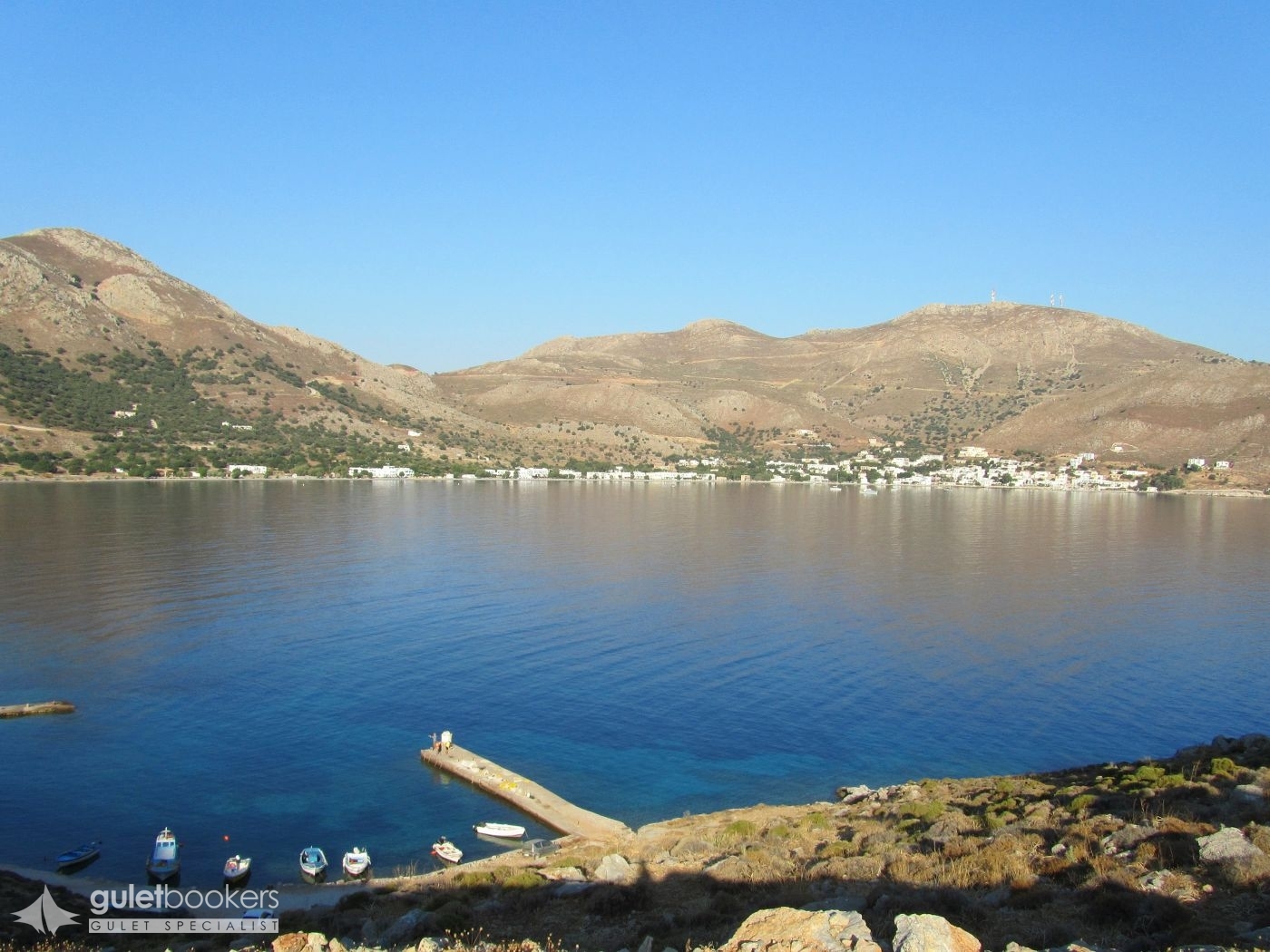
The ragged, mountainous terrain of Tilos; its densely forested ranges; its hilly vistas; and its verdant valleys, are home to four hundred species of flowers and herbs and the habitat of rare species of birds such as Bonelli’s eagles, hawks, nightingales, goldfinches, herons and bee-eaters. You will find picturesque villages and fascinating beaches. The last elephants on Europe lived here. The dwarf elephants made their appearance on the island 45,000 years ago and became extinct approximately 4,000 ago. The entire island is a huge ecological park and is protected by the relevant international treaties. In antiquity, Tilos was renowned for its herbs. It rose to prominence during the ancient classical times, the period when Irinna, a famous ancient poetess, lived on the island. Megalo Chorio is the island’s capital, 7 km NW of the harbour. Stone houses built according to the island’s unaffected traditional architecture make this small town stand out. Strolls along the narrow alleys are a pleasant pastime. The medieval castle has been built on the location of ancient Tilos town at the top of the hill.
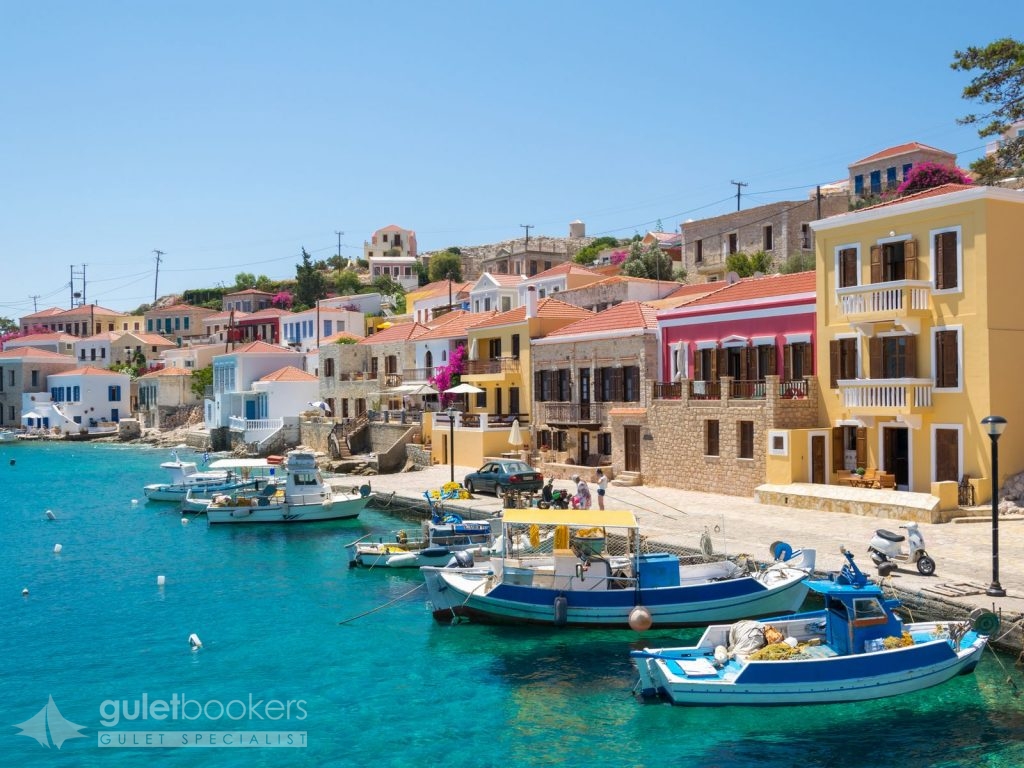
Chalki has been named after the copper (chalkos) mines that used to exist on the island. As of 1983 it has been known worldwide as the “Island of Peace and Friendship” for the young; it offers an enjoyable stay in an enviable serene setting. Chalki prospered in the late 19th century when the islanders became engaged in shipping and the sea sponge trade. Chalki shared the historical path of Rhodes and the island was integrated in the Greek state in 1948. Nimporio is the island’s capital town and has been built in an amphitheatre-like manner, overlooking the crystal-clear blue sea. It keeps a stately beauty, evident in the picturesque alleys and the singular architectural features that adorn the houses; it is one of the most beautiful neoclassical towns in Greece! Chorio used to be the island’s old capital and it was built next to the mighty castle of the Knights Hospitaller of the Order of St John for protection against the pirates. Once the pirate threat had been removed, the locals founded Chalki town or Nimporio (1850-1870) and built magnificent mansions; the latter manifest today the island’s past prosperity times. Chalki has been listed as a heritage town.
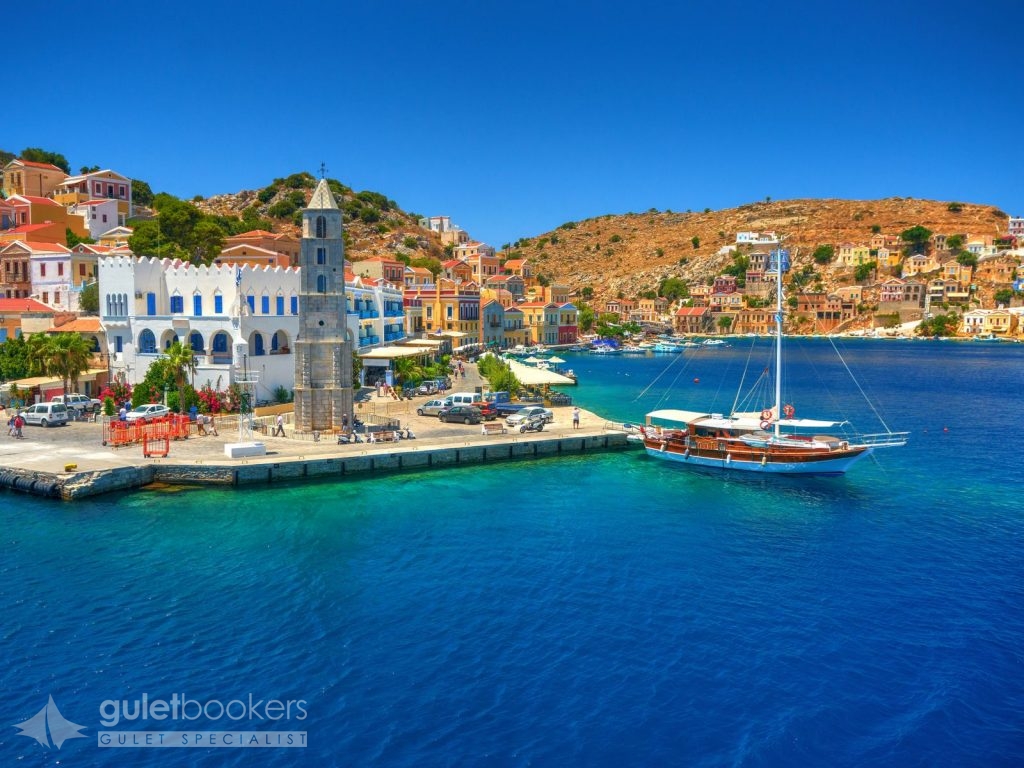
Symi is a cosmopolitan island that has one of the biggest and most beautiful neoclassical towns in the whole country. It boasts a rich tradition in myths as it was first inhabited in the prehistoric times. King Nireas became a legend as he participated in the Trojan War. The locals became engaged in sea sponge harvesting and shipbilding and that is why during the Turkish Occupation (since 1522) the islanders secured firmans of preferential treatment from the Sultan. This is when the School of Agia Marina and Aigli Reading Room were founded. The 19th century is the period of great prosperity for the island when its population had reached 25,000. In 1945, the treaty for the Dodecanese surrender to the Allied Forces was signed on the island. Symi was integrated in Greece in 1948.
The capital town is divided into two large districts. Gialos is the port of the island that never fails to impress visitors with its magnificent neoclassical multi-coloured buildings next to the sea and on the hills and Chorio, the other district, is the larger of the two. Apart from the approximately 3-kilometre asphalted road that connects Gialos and Chorio there is also Kali Strata: 500 wide stone steps climbing uphill and connecting the two districts. Kali Strata is flanked by the largest mansions in Symi.
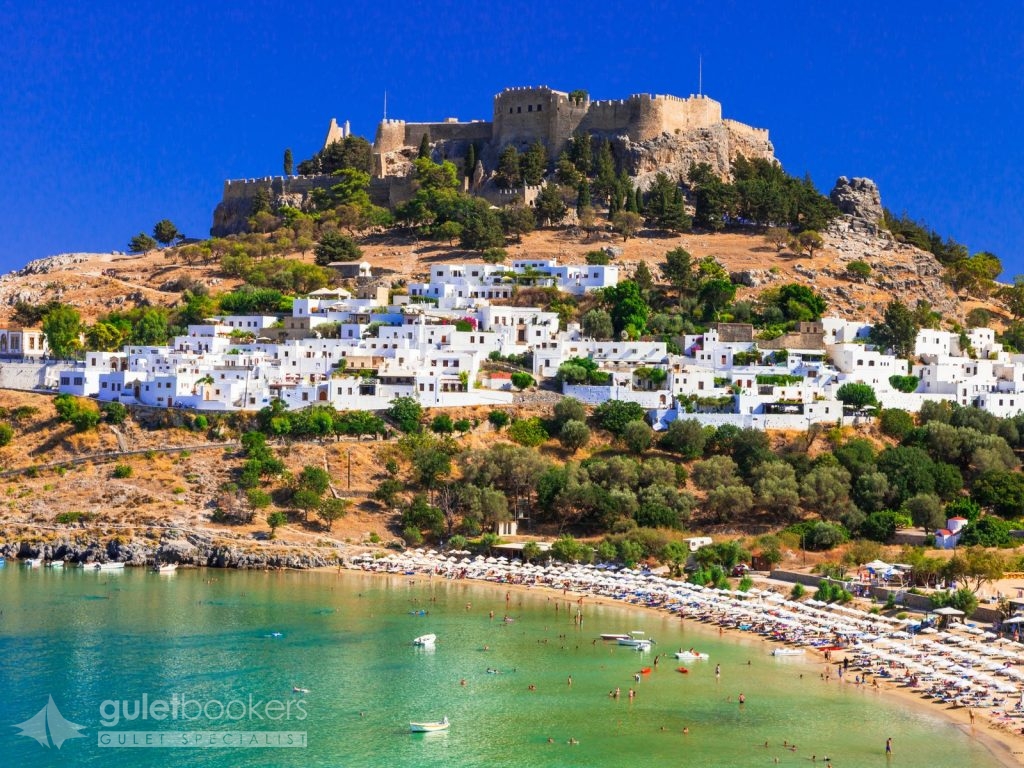
Rhodes is the fourth largest island in Greece, after Crete, Evoia and Lesvos. Endless stretches of coastline and pine forests on mountains dotted with villages, archeological sites, and a medieval city of exceptional beauty attract over a million tourists every year. Rhodes is the largest of the Dodecanese Group with an area of 1,398 sq. km, a coastline that reaches 220 km. It has been populated since prehistoric times and flourished during the Mycenaean period. It enjoyed great prosperity in the 4th c. BC when the Colossus of Rhodes was erected, a work of art by Chares from Lindos, Rhodes, a disciple of the sculptor Lysippos. After the destructive earthquake in 155 AD, Rhodes knew many conquerors (Persians, Arabs, Saracens and Selzuk Turks). In 1309, the Knights Hospitaller [Order of the Knights of Rhodes] acquired the island and restored the castle adding fortifications that were unmatched in Europe at the time. This castle remained the seat of the Knights until 1522 when the Turks conquered it after tough fights. In 1912, Rhodes became occupied by the Italians until 1948, when Dodecanese became integrated in the Greek state.
The capital of the island is considered to be one of the most beautiful cities worldwide. It was founded in 408 BC. Its medieval architectural features blend with the modern style in buildings. The city comprises the old, fortified medieval town and the modern one, with its old, neoclassical buildings and other recent structures. The medieval town is a UNESCO World Heritage Monument and has been built in a semi-circular fashion around the central harbour.
Send Enquiry Santorini – South Dodecanese – Rhodes
This itinerary is only bookable for private charters. If you are interested in a cabin charter, please contact us for more information.
Guletbookers is the independent gulet charter company located in Bodrum - Turkey and dedicated to giving you
the best gulet charter possible from the widest choice of gulets possible.
Get in touch via WhatsApp for Seamless Communication.
Talk to our experts and browse through more yachts.







